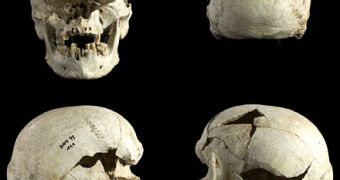Romans considered themselves civilized, seeing the others - with the exception of the Greeks - as barbarians.
But between 264 BC and 404 AD, the Roman society enjoyed some of the cruelest and inhuman games: the gladiator fights, a sport in which thousands of people were slaughtered in the Roman arenas for the delight of the public.
In the Roman society, gladiator glory was celebrated in everything from mosaics to graffiti and oil lamps.
For the first time, researchers have detected an ancient graveyard for gladiators at Ephesus, modern Turkey, a great town of antiquity. The research of bones and their injuries come with a lot of information on how they lived, fought and died.
The Ephesus tombs, containing thousands of bones, were marked by three gravestones representing gladiators.
Professor Karl Grossschmidt and Professor Fabian Kanz, two pathologists at the Medical University of Vienna, investigated forensically for five years the bones belonging to at least 67 individuals, mostly aged 20 to 30.
One interesting clue is that many individuals displayed healed wounds, thus they were prized, receiving careful medical treatment. The bones have no multiple wounds, thus showing that the fighters were not thrown in chaotic mass brawls, but rather into organized duels with strict rules.
Historical sources say that, usually, in the case of defeated gladiators that behaved cowardly or which didn't show enough skill, the public demanded him to be killed; moreover, he was expected to face death "like a man", remaining motionless for the mortal blow.
The unhealed wounds on many Ephesus bones confirm these executions. Some skulls presented sets of up to three holes at odd intervals, inflicted by a blow from a trident-like weapon. "The bone injuries - those on the skulls for example - are not everyday ones, they are very, very unusual, and particularly the injuries inflicted by a trident, are a particular indication that a typical gladiator's weapon was used," said Grossschmidt.
Other skulls had rectangular holes made rather with a heavy hammer than with a gladiator's weapon. "One possible explanation, which is supported by a number of archaeologists, is that there must have been an assistant in the arena who basically gave the gladiator the coup de grace," said Kanz.
"I assume that they must have been very severely injured gladiators, ones who had fought outstandingly and so had not been condemned to death by the public or by the organizer of the match, but who had no chance of surviving because of their injuries."
When a gladiator managed to withstand for three years, he was freed and often these individuals became gladiator instructors.
The team found the body of a mature man who may have been a retired gladiator. He bore healed wounds but none was deadly. "He lived quite a normal Roman lifespan. And I think, most probably, he died of natural causes", explained Kanz.
Based on historical data, the researchers estimated at 30 % a gladiator's chance of survival: this means that, on average, a gladiator was killed in his third fight...

 14 DAY TRIAL //
14 DAY TRIAL //